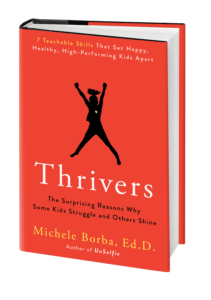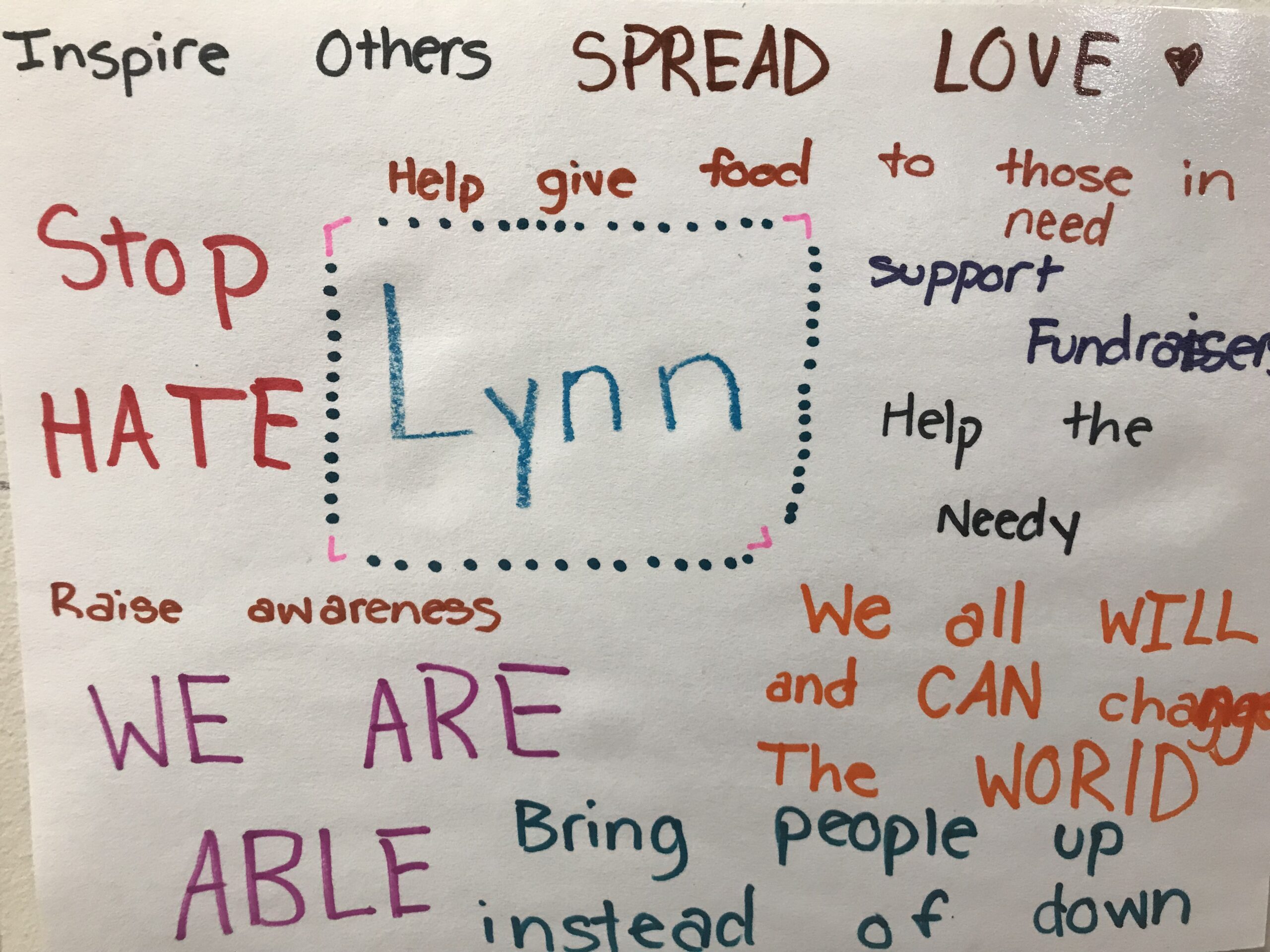10 Ways to Raise A Non-Racist, Tolerant Child
I was in the Portland, Oregon, airport last year and witnessed one of the most powerful lessons about teaching tolerance. About two dozen preschool children and their teachers were on an airport field trip. All were walking hand in hand and wearing t-shirts that read: “Children Are Not Born Racist.” It was quite an image. Other passengers were struck as I was, and many stopped to stare. One man standing near me said to no one in particular, “If only parents could understand that one message—maybe we could get along.”
The lesson conveyed on the children’s shirts conveyed what research confirms: We are not born with intolerant beliefs-we learn them and was aimed at the adults, not children. If we really are concerned about ending bullying, cruelty, racism, bigotry, intolerance, and hate, we must consciously model and nurture tolerance, and use science-backed ways to nurture acceptance, compassion and empathy in our homes and schools from the time our kids are young. Doing so, is the best chance we have to help children grow to appreciate and respect others who are different from themselves.
American youth are displaying intolerant actions at alarming rates and at younger ages. Hate crimes in the United States reached the highest level in more than a decade. What’s more, a 2020 nationwide 50-state survey of millennials and Generation Z showed that sixty-three percent did not know that 6 million Jews were murdered in the Holocaust. Over half of those could not name a single concentration camp and thought the death toll was fewer than two million.
Tolerance is a powerful virtue that help curtail hatred, bullying, violence, and bigotry while at the same time influencing us to treat others with kindness, respect, and understanding. While tolerance doesn’t call upon us to suspend moral judgment, it does require us to respect differences. This character strength is what helps our children recognize that all people deserve to be treated with dignity, justice and respect even if we disagree with some of their beliefs or behaviors. And it is a critical component of character that we must build in our children so they aren’t so quick to judge and focus on differences but instead what they have in common.
The Anti-Defamation League points out that hate develops slowly and builds say . It starts with a stereotype or bias and then if not countered can increase. Stereotypes can easily turn to prejudice, bullying and then racism and become systemic.. Racism can become institutional discrimination and hate crimes with genocide as the outcome. Laws don’t change hate, parenting will. We must demand that our children treat everyone with dignity.
Laws don’t change hate, parenting will. We must demand that our children treat everyone with dignity. Here are ten ways to boost tolerance and raise a morally strong generation.
10 Ways to Boost Tolerance and Raise Non-Racist, Empathetic Kids
1. Confront outdated beliefs.
You might begin to examining your own childhood upbringing. What were some of your parents’ prejudices? Do any of those remain with you today?
Take time to reflect on how you might be projecting those old, outdated ideas to your child. Then make a conscious attempt to temper them so that they don’t become your child’s prejudices. Sometimes you might not even know you are tainting your children’s views.
2. Encourage open and accepting minds.
Parents who think through how they want their kids to turn out usually succeed simply because they planned their parenting efforts. If you really want your child to respect diversity, you must adopt a conviction early on to raise him to do so. Once your child knows your expectations, he will be more likely to embrace your principles.
3. Cultivate pride in their own culture.
Learning about their family background helps children connect with their heritage and develop an appreciation and respect for not only their own national and ethnic backgrounds, but also for those of their friends and classmates.
As Barbara Mathias and Mary Ann French, authors of 40 Ways to Raise a Nonracist Child, explain: “Once your child has a solid sense of self and pride in her own people, it will be easier for her to find joy in the differences of others.”
So help your child understand his heritage and as well as begin to appreciate just how much the world is a melting pot of different customs and ideas.
4. Disallow discriminatory comments.
When you hear prejudicial comments, verbalize your displeasure. How you respond sends a clear message to your child about your values: “That’s disrespectful and I won’t allow such things to be said in my house,” or “That’s a biased comment, and I don’t want to hear it.” Your child needs to hear your discomfort so that they know you really walk your talk. It also models a response they should imitate if prejudicial comments are made in her presence.
5. Embrace diversity.
From a young age, expose your child to positive images – including toys, music, literature, videos, public role models, and examples from TV or newspaper reports – that represent a variety of ethnic groups. Encourage your child, no matter how young, to have contact with individuals of different races, religions, cultures, genders, abilities, and beliefs. The more your child sees how you embrace diversity, the more prone he’ll be to follow your standards.
Jan Arnow, author of Teaching Peace, points out that “only 10 percent of the almost five thousand children’s books published each year in the United States are multicultural in nature. Of those, fewer than fifty titles annually have been written about Native American and Asian peoples.” That is a troubling statistic, because research says that children first become aware of race and gender differences around two years of age, around the time many parents have started nightly bedtime traditions of reading with their kids. Expose your child early to a variety of multicultural literature that features positive images of all cultures and genders. It is one way to increase tolerance as well as reduce or prevent prejudice.
6. Emphasize WE, not ME.
Encourage your child to look for what he has in common with others instead of how he is different. Any time your child points out how they are unlike someone, you might say. “There are lots of ways you are different from other people. Now let’s try to think of ways you are the same.”
One fun way is to play as a family a simple game called “Alike and Different.” It begins by having family members form pairs. Tell each pair to think of five ways they are alike and five ways they are different. Answers can be written or drawn. “Alike” answers might be, for example, “We are African-American, Baptist, dark haired, brown eyed, sisters, and Williams family members.” “Different” answers could be, for example, “I like soccer, she likes tennis; I play saxophone, she plays violin; I am a fourth grader, she is a second grader; I am 4’5″, she is 4’2″.”
In a larger family, have each twosome report their findings back to the family. From then on, any time your child points out how she is different from someone, you might say. “Yes, there are lots of ways you are different from other people. Now let’s try to think of ways you are the same.”
7. Give straightforward, simple answers.
Kids are naturally curious, so you should expect questions. Asking them is one way for them to sort out how they are different or the same from others as well as to learn to feel comfortable with those differences.
Beverly Daniel Tatum, author of “Why Are All the Black Kids Sitting Together in the Cafeteria?” stresses the importance of answering children’s questions simply and honestly even though some issues may seem embarrassing or even taboo. How you respond can either create stereotypes or prevent from forming. For very young kids, usually a one-or two-sentence answer is enough:
CHILD: “Sally is a girl. She shouldn’t be playing football!”
PARENT: “Girls can play the same sports boys do. Some girls like football, and some girls don’t. Sally likes to play football, so she should play it.”
CHILD: “Why is that boy sitting in that chair that moves?”
PARENT: “That chair is called a wheelchair, and it has a motor. The boy’s legs don’t work the same as yours. The chair is what he uses to get from place to place.”
8. Counter biased beliefs.
When you hear a child make a prejudicial comment, listen to find out why they feel the way they do. Then gently challenge their views and point out why they are incorrect. For example if your child says: “Homeless people should get job,” you might counter: “There are many reasons homeless people don’t work or have houses. They may be ill or can’t find jobs. Houses cost money, and not everyone can pay for one.”
9. Model tolerance.
The best way for your child to learn tolerance is for him to watch and listen to your daily example. So ask yourself one critical question each day: “If my child had only my behavior to copy, would they be witnessing an example of what I want them to emulate?” Make sure you are walking your talk.
The best secret to teaching kids tolerance is not by lectures or worksheets, but through our example. Be a living textbook of tolerance for your child and for all other children. It’s also the best way we have to create a peaceful world for our children and reduce peer cruelty.
10. Nurture understanding.
Just as hatred, bigotry, prejudice, and intolerance are learned, so too are sensitivity, understanding, empathy, and acceptance. The sooner we start our lessons, the better the chance we have of preventing small-minded attitudes and behaviors from taking hold-and inspiring children to live more harmoniously in this global world.
Kids aren’t born hateful: prejudices are learned. While intolerance, insensitivity, and hatred can be learned, so too can sensitivity, understanding, empathy, and tolerance.
Dr. Michele Borba, Parenting Expert
 I am an educational psychologist, parenting expert, TODAY show contributor and author of 22 books. You can also find dozens of research-based and proven, practical tips to raise empathetic, tolerant children in my latest book, UnSelfie: Why Empathetic Kids Succeed in Our All-About-Me World.
I am an educational psychologist, parenting expert, TODAY show contributor and author of 22 books. You can also find dozens of research-based and proven, practical tips to raise empathetic, tolerant children in my latest book, UnSelfie: Why Empathetic Kids Succeed in Our All-About-Me World.
I’m excited to announce the publication of my new book, Thrivers: The Surprising Reasons Why Some Kids Struggle and Others Shine on March 2. For forty years I’ve wondered why some kids have an “We’ve got this!” attitude and discovered the science of resilience. Thrivers are made, not born. The book is packed we science-backed ways we raise mentally and morally strong kids who are prepared to live and thrive in a diverse, uncertain world. I hope you like it!


